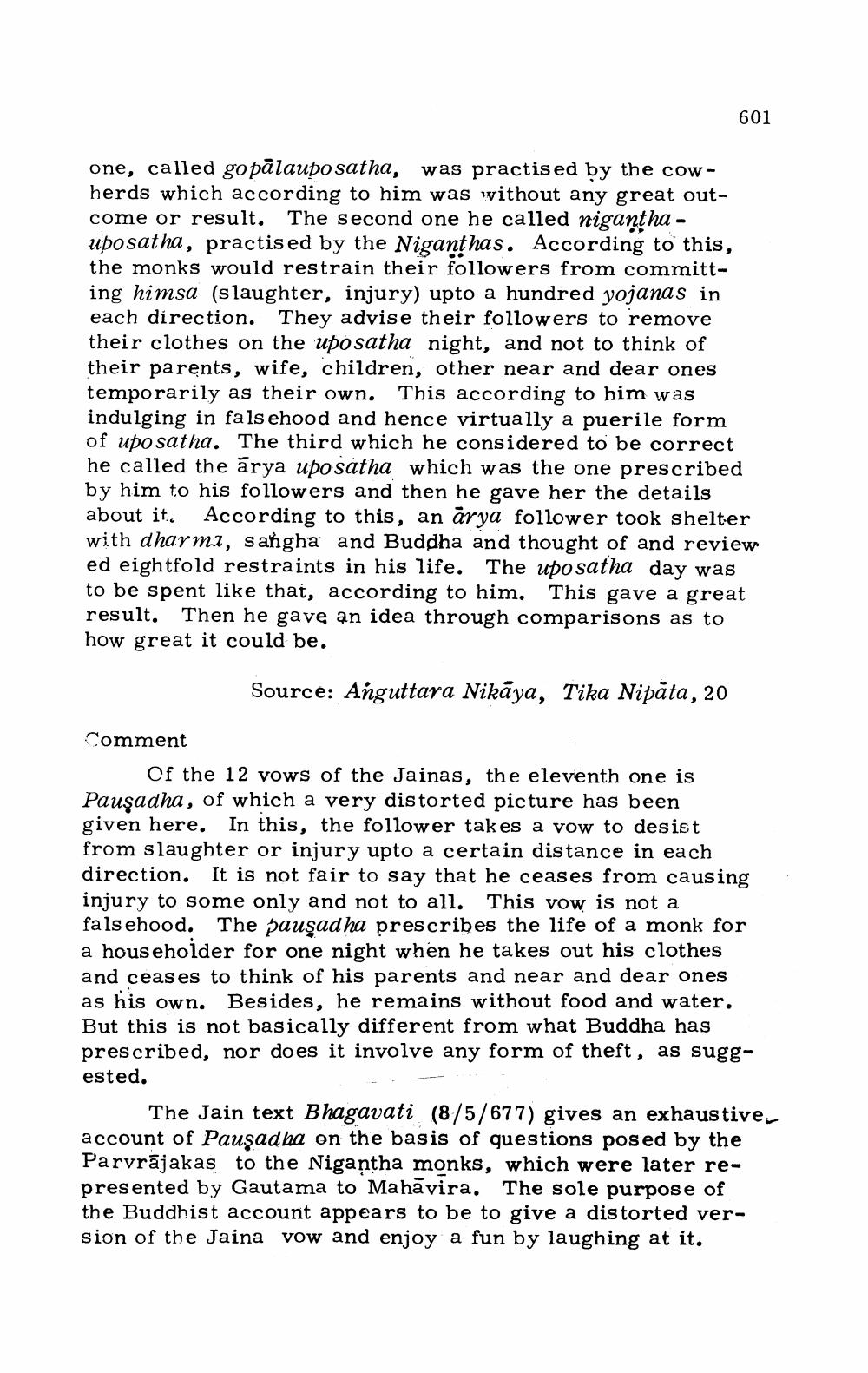________________
601
one, called gopālaupo satha, was practised by the cowherds which according to him was without any great outcome or result. The second one he called nigantha - uposatha, practised by the Nigant has. According to this, the monks would restrain their followers from committing himsa (slaughter, injury) upto a hundred yojanas in each direction. They advise their followers to remove their clothes on the uposatha night, and not to think of their parents, wife, children, other near and dear ones temporarily as their own. This according to him was indulging in falsehood and hence virtually a puerile form of upo satha. The third which he considered to be correct he called the arya upo satha which was the one prescribed by him to his followers and then he gave her the details about it. According to this, an arya follower took shelter with dharmi, sangha and Buddha and thought of and review ed eightfold restraints in his life. The upo satha day was to be spent like that, according to him. This gave a great result. Then he gave an idea through comparisons as to how great it could be.
Source Source: Anguttara Nikaya, Tika Nikita, 20
Comment
Of the 12 vows of the Jainas, the eleventh one is Pauşadha, of which a very distorted picture has been given here. In this, the follower takes a vow to desist from slaughter or injury upto a certain distance in each direction. It is not fair to say that he ceases from causing injury to some only and not to all. This vow is not a falsehood. The pausadha prescribes the life of a monk for a householder for one night when he takes out his clothes and ceases to think of his parents and near and dear ones as his own. Besides, he remains without food and water. But this is not basically different from what Buddha has prescribed, nor does it involve any form of theft, as suggested.
The Jain text Bhagavati (8/5/677) gives an exhaustiver account of Pausadha on the basis of questions posed by the Parvrājakas to the Nigantha monks, which were later represented by Gautama to Mahavira. The sole purpose of the Buddhist account appears to be to give a distorted version of the Jaina vow and enjoy a fun by laughing at it.




